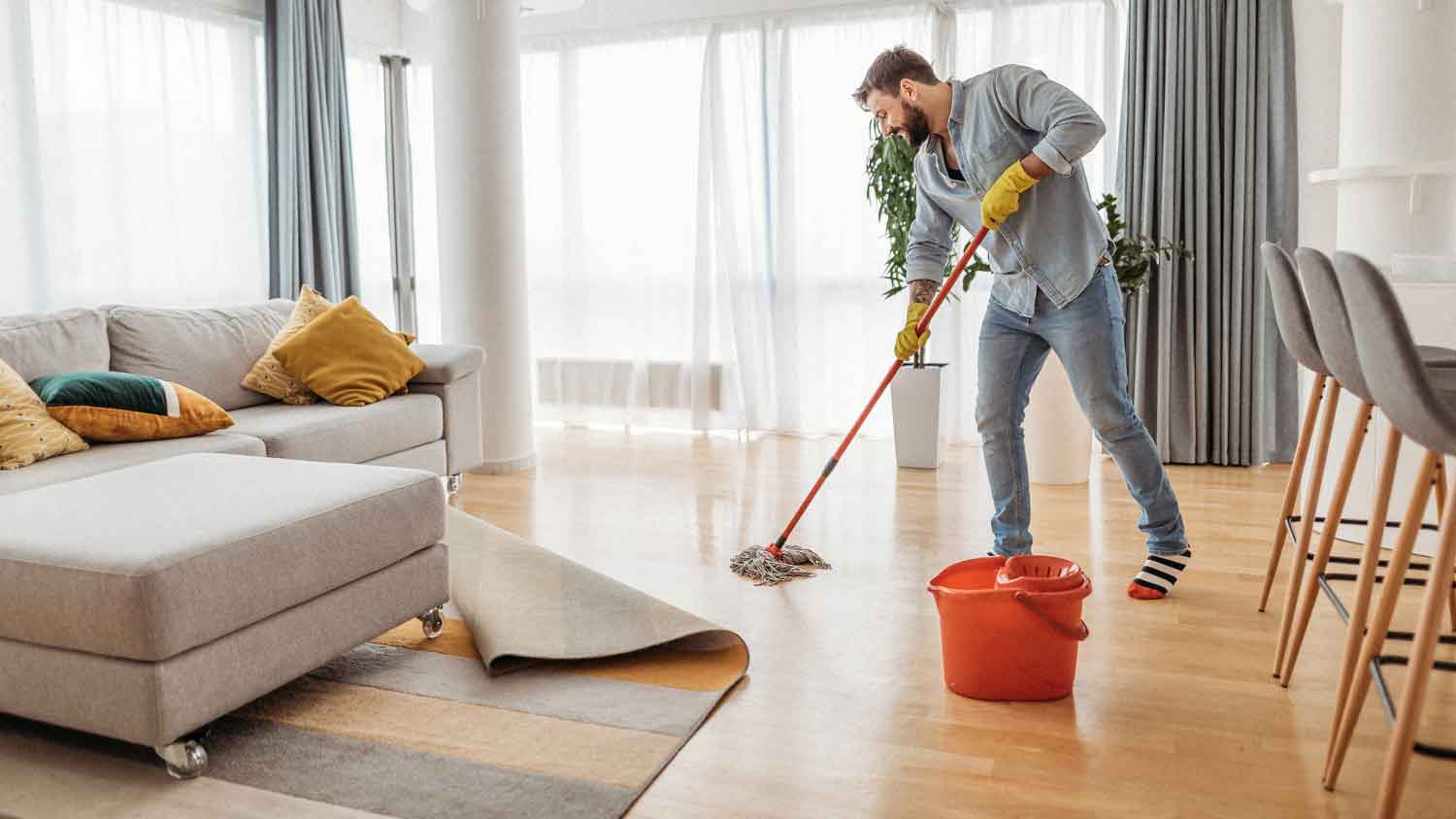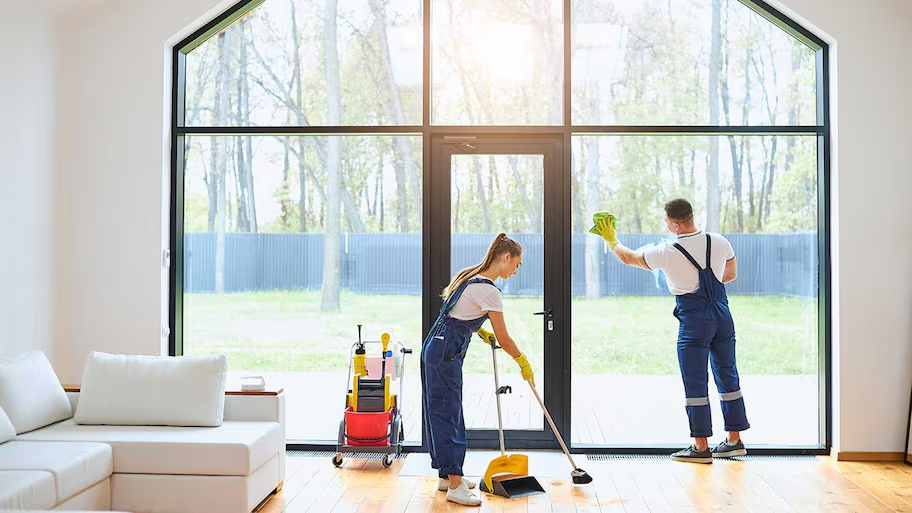DIY Guide to Making 5 Types of Homemade Disinfectant Spray
For homemade disinfectant sprays, try shopping your pantry


Homemade disinfectants are a healthy alternative to commercial cleaners.
You can make your own disinfectant spray with a few pantry staples.
Most DIY disinfectants have a three-month shelf life.
If you’re looking for a healthier alternative to commercially available disinfectant sprays, homemade disinfectants are a great option. These cleaners offer a safe way to disinfect your child’s toys, countertops, faucet handles, and other high-touch surfaces and items, keeping your home germ-free without any adverse effects on your health. Bonus: In many cases, they’re significantly cheaper to boot. When stored properly, you can expect most DIY disinfectants to remain effective for about three months.
Preparing to Make Your Own Disinfectant Spray
Before you begin making a disinfectant spray, there are a few things to keep in mind for safety’s sake and quality control.
Grab the Right Bottle
For the most part, regular plastic spray bottles work fine for DIY disinfectant sprays. If you're using hydrogen peroxide, however, you will need an opaque or amber-colored spray bottle because hydrogen peroxide will degrade when exposed to light.
Do a Patch Test
When making homemade cleaners, it's a good idea to do a spot test on a hidden area of any surface where you intend to use the spray. Homemade disinfecting sprays that use bleach, alcohol, and vinegar are pretty potent, and they could do irreparable harm to surfaces like granite countertops or wooden tables. Similarly, never use a DIY disinfecting spray with a bleach base on wood or stainless steel appliances.
Pay Attention to the Science
While the methods outlined below show a variety of household substances to make safe DIY disinfectant sprays, you should avoid some chemical combinations at all costs. For example, never mix bleach and vinegar. The combination produces a toxic chlorine gas that attacks the body’s mucus membranes and the respiratory system, which can be fatal.
So, if your creative juices start flowing and you feel like developing your own recipe, do your research before you start pouring.
Stay Safe
When making a disinfecting spray, do so in a well-ventilated area and consider wearing gloves. If you choose to forgo the gloves and get any of these chemicals on your hands, wash your hands immediately and don’t touch your eyes. While the dangers of bleach and vinegar might be obvious, it's important to note that essential oils are also pretty potent. Undiluted essential oils can cause skin irritation and burns, so you'll want to be careful with those as well.
How to Make Rubbing Alcohol-Based Disinfectant Spray

Isopropyl alcohol is the main ingredient in hand sanitizers, so as you might have guessed, it also makes a great disinfectant spray.
Supplies
1 ½ cups of 70% isopropyl or rubbing alcohol
¾ cup of water
15 drops of lemon essential oil
15 drops of lavender essential oil
How to Make
Add the rubbing alcohol to the spray bottle, followed by water. Then, add the essential oils. Close the spray bottle tightly and give it a good shake to mix the solution thoroughly. Shake before each use.
How to Use
Spray the disinfectant directly onto soft or hard surfaces and wipe with a microfiber cloth.
How to Make Bleach-Based Disinfectant Spray
According to the Centers for Disease Control and Prevention, bleach kills 99.9% of germs and bacteria, so using it to make a DIY disinfectant spray is almost a no-brainer.
Supplies
4 teaspoons of bleach
1 quart of water
How to Make
Start by adding the water to a spray bottle, and then add the bleach. Close the spray bottle tightly and shake it to mix the solution thoroughly. Shake this disinfectant spray before each use.
How to Use
Spray the bleach solution onto whatever surface you’re cleaning and let it sit for about five to 10 minutes. Use a clean cloth to wipe the surface down thoroughly when the time is up.
Keep in mind that undiluted bleach is fine for about six to 12 months. However, diluted bleach will start to break down after 24 hours and lose potency, so you may not want to mix a double batch of this particular disinfectant.
How to Make Hydrogen Peroxide-Based Disinfectant Spray

Hydrogen peroxide can effectively tackle a host of microorganisms, including bacteria, yeast, fungi, and viruses. According to the Centers for Disease and Control Prevention, it makes an excellent chemical disinfectant.
Supplies
Opaque or amber-colored spray bottle
¼ cup of hydrogen peroxide (3%)
1 cup of water
1 teaspoon of your preferred essential oil
How to Make
Pour all the ingredients into a spray bottle, secure the spray nozzle, and then give the solution a good shake.
How to Use
Spray the hydrogen peroxide disinfectant liberally onto any hard surface and let it sit for a minute before wiping it up with a soft cloth.
How to Make Vinegar-Based Disinfectant Spray

Distilled white vinegar makes a powerful multipurpose cleaner that quickly cuts through dirt and grime, but it’s not the most powerful disinfectant. While it may kill some germs, it doesn’t kill 99.9% of germs, which is the U.S. Environmental Protection Agency standard for a solution to be labeled a disinfectant. So, this homemade cleaner might be best reserved for cleaning the areas where gunk tends to build up, like the tops of your kitchen cabinets. For high-touch areas in your home, opt for any of the other homemade disinfectants we’ve outlined.
Supplies
½ cup of distilled white vinegar
2 cups of water
30 drops of your preferred essential oil (lemon, orange, or lavender are always a good bet for cleaning)
How to Make
Mix all the ingredients in a spray bottle, close it tightly, and shake to combine. Remember to shake the spray before each use.
How to Use
Spray the vinegar solution onto the surface you want to clean and let it sit for 10 minutes. After that, simply wipe down the surface with a clean cloth.
How to Make Vodka-Based Disinfectant Spray
Vodka makes a great surface disinfectant, courtesy of its high alcohol content. When making this homemade disinfectant, it’s important to follow the recipe exactly as it’s written. Using a lower-proof vodka or diluting it with more water will make it less potent.
Supplies
¾ cup of vodka (ideally, 60% alcohol or 120-proof)
¼ cup of water
About 30 drops of your preferred essential oil
How to Make
Mix all ingredients into a spray bottle, close the cap tightly, and shake to mix.
How to Use
Spray the vodka disinfectant onto the surface you wish to sanitize and let it sit for 10 minutes. When the time is up, wipe the surface with a clean cloth and let it air-dry.





- How to Clean Your House During and After an Illness
- How to Install Spray Foam Insulation Like a Pro
- 9 Tips to Clean and Sanitize Your Home Gym Equipment
- When to Spray Fruit Trees for Bugs: A Practical Guide
- How to Make Homemade DIY Mosquito Repellent
- How to Remove Mold From Fabric Furniture
- 11 Handy Tips and Tricks to Help With Your Next Home Project
- A Complete Guide to How to Clean Your Ceilings and Walls
- How to Epoxy Countertops in 8 Steps
- Should I Clean the House After Pest Control?










